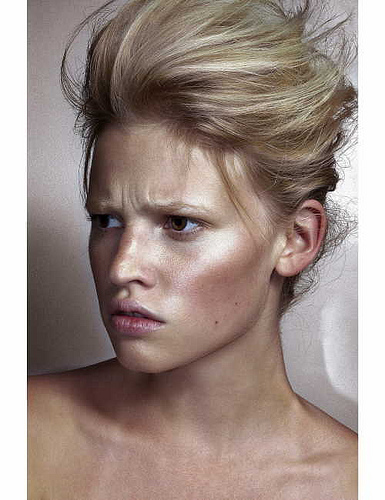Keep your skin looking young with simple precautions you can easily incorporate into your daily life. Protecting and caring for your skin today will, without doubt, benefit you in years to come. While genetic factors play a crucial role in determining how well your skin will age. there are preventative measures you can take to avoid premature ageing.
The free radical theory
It is widely believed by the scientific profession that highly reactive molecules, known as free radicals, are responsible for the changes that constitute ageing. Free radicals are produced during normal body functioning when oxygen interacts with certain fats.
While the body is usually able to 'mop up' these free radicals, when the body's supply of free radical scavengers' is reduced the molecules cause cell damage. Anti-oxidant vitamins, especially the vitamins A, C and E, have been found to neutralise the destructive effects of free radicals in the body.
Protection from the sun
Most of the changes that come with the decades are sun-related and therefore avoidable. These changes include: fine lines at the corners of the mouth and eyes which show during your twenties and thirties; color loss by the late thirties to forties; 'crows' feet', frown and forehead lines, and shrinkage of the upper lip that become more visible in the fifties; and in the sixties, jowls, age spots and broken blood vessels.
Some dermatologists say that, when adequately protected, the skin can repair accumulated damage by as much as 30 per cent. As ultraviolet light surrounds us constantly, it is recommended that we wear moisturizers that contain ultraviolet filters every day.
As exposure to sunlight produces free radicals, a new trend in sun protection products is to include vitamins E and or C. Ultraviolet light, smoking and other forms of pollution produce an inflammatory reaction in the cells. New skin care products which contain anti-inflammatory ingredients help prevent damage.
Stop smoking!
As well as damaging your lungs, the ageing effects on the skin are dramatic. Smoking damages the skin's collagen, etches lines around the mouth and eyes, and causes drier, rougher skin.
Beauty from within
As well as combating skin-ageing free radicals, the A, C and E vitamins have other essential roles in maintaining your skin.
Vitamin A , found in foods such as broccoli, carrots and spinach, is essential for the growth and repair of skin tissues. Vitamin C is needed for collagen production and for maintaining a healthy immune system, while vitamin E is a vital anti-oxidant that aids normal growth and development.
It is important to eat fish oils and unrefined vegetable oils and to avoid the 'bad', saturated fats.
Sleep
The body diverts blood away from the skin to the 'essential' organs as a result of lack of sleep, giving your complexion that fatigued look and slack muscle tone. Adequate sleep is one of the best beauty treat-ments available!
Collagen treatment
Lines and wrinkles can be injected with collagen (which is extracted from animal sources), an anti-ageing strategy that must be done by a professional. Top-up treatments are needed every 3-12 months.
AHA skin peels
Alpha hydroxy acids, or AHAs, are extracted from sources such as apples, grapes, lemons and passion fruit (in the form of fruit acids), milk (as lactic acid) and sugar cane (as glycolic acid). Applied to the skin, they act as a skin peel, increasing exfoliation and stimulating the turnover of new cells. While dermatolagiest can use a stronger solution for immediate effect, products bought over the counter need 4-8 weeks to take effect.
Retin-A
Also known as tretinoic acid, Retin-A is an acne treatment that has been found to stimulate the growth of new collagen and to reduce wrinkles and fine lines. It has yet to receive government approval for use as an anti-ageing product and cannot be used by women of child-bearing age.


















